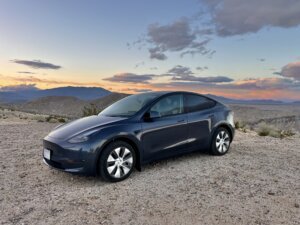This article describes what the term “EVSE Charging Station” means in relation to electric car charging, and debunks common misconceptions.
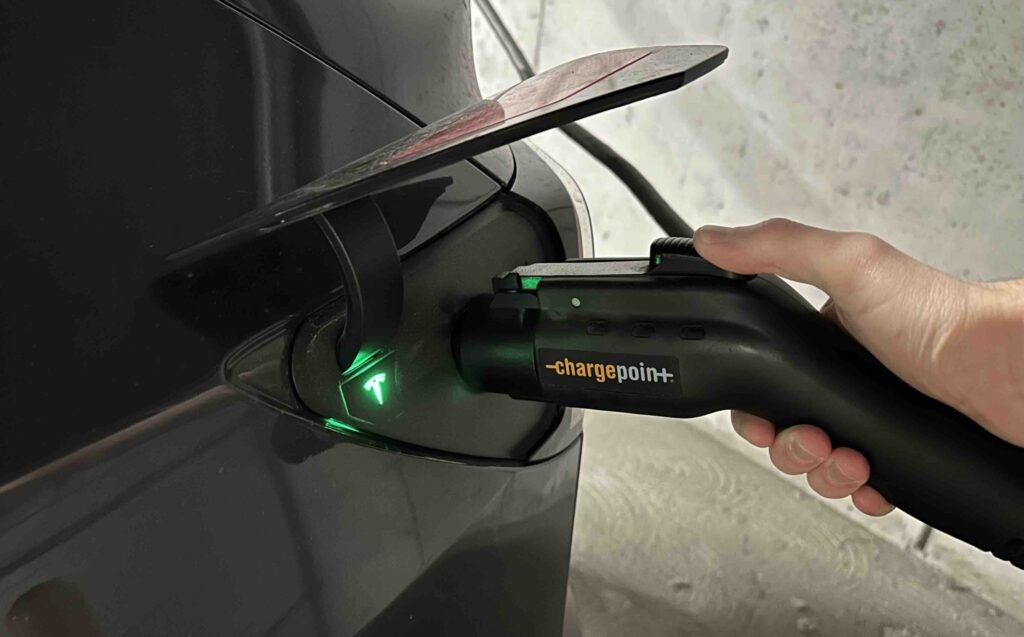
The term EVSE charging station is used regularly when referring to the components used to charge electric vehicles (EVs). Its meaning can be quite unclear and is often misunderstood. For one, the phrase EVSE charging station is a combination of a component and its purpose. This phrase does not make a lot of sense; for example, you would not call a “stove” a “stove food cooker”. Additionally, the EVSE is not even the component that charges an EV. If you work in the EV space and want to improve your understanding of why EVSE charging station is a silly name, or you’re an electric car enthusiast simply looking to learn more about EVSE, you’ve come to the right place!
My goal in this article is to demystify the role and meaning of EVSE charging stations. EVSE is actually a simple component of EV charging that is frequently overcomplicated, causing misunderstanding. This article delves into electric car charging infrastructure for the common EV owner, providing the context of EVSE charging stations to describe their importance. Read on to explore the ins and outs of EVSE charging stations and their role in shaping the future of sustainable travel.
✈️ My Travel Essentials – What I Actually Use & Recommend! 🌍
I’ve traveled extensively and use these tools on every trip. They’ve saved me money, time, and headaches, and they’ll do the same for you! 👉 Book smarter & save more 🚀
✅ 🏨 Best Hotel Deals → Expedia
I book all my hotels through Expedia because they offer cash-back rewards and some of the lowest rates online. Tip: activate Rakuten for extra cashback and $30 free.
✅ 🎟️ Skip-the-Line Tours & Unique Experiences → Get Your Guide
Want to avoid lines and overpriced tourist traps? I use Get Your Guide to book skip-the-line passes, tours, and hidden gem activities. Use my link for 10% off your first booking!
✅ 📱 Stay Connected Without Roaming Fees → Airalo
No more SIM card hassle! I use Airalo’s cheap, reliable eSIMs to stay connected instantly in over 200 countries. Use my promo code AIRALOESIM10 for 10% off!
Short on time? Here’s the main takeaway:
- EVSE = Electric Vehicle Supply Equipment.
- The phase EVSE charging station is inaccurate. It should be said simply as EVSE.
- EVSE is the infrastructure that facilitates the flow of electricity between an EV and a power source. It is inclusive of the charging station.
- EVSE is not the car charger. The car charger is a component within an EV.
Table of Contents
Defining EVSE
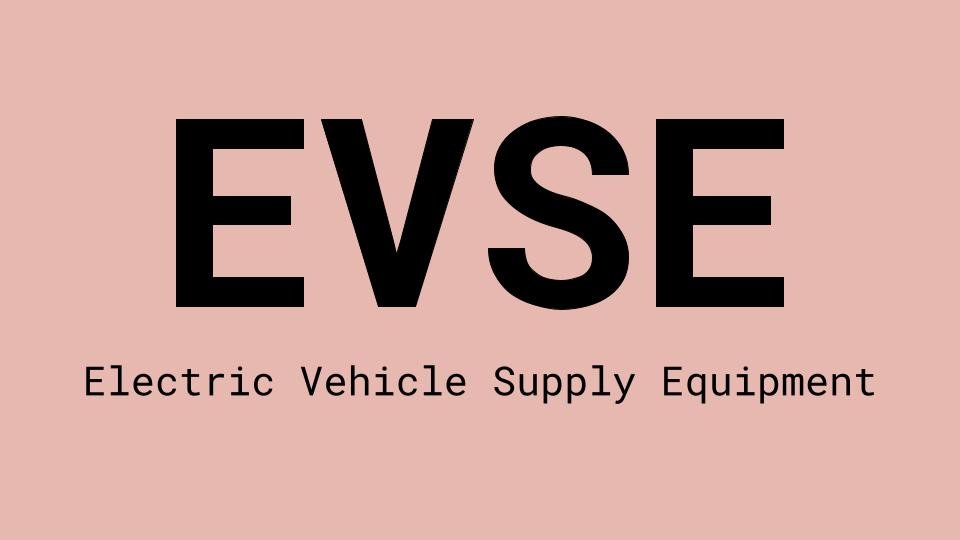
Although commonly referred to as an “electric car charger”, EVSE stands for Electric Vehicle Supply Equipment.
Now if you’re like me, you might find yourself pondering whether the grammar in the title “What is An EVSE Charging Station?” is correct. Is EVSE an acronym, adjective, or a noun? Well, this isn’t a grammar blog, but don’t worry- I’ve got you covered.
Technically speaking, EVSE is an initialism1, not an acronym. The inclusion of the second “E” (Equipment) in EVSE is where I find the grammar to be somewhat perplexing. Is it singular or plural- can you have “equipments”? Technically speaking, yes, but it does sound odd when spoken aloud.
Simply put, EVSE is the charging infrastructure or equipment that is used to connect an electric car to the power grid. This connection supplies the electricity to your car so it can recharge.
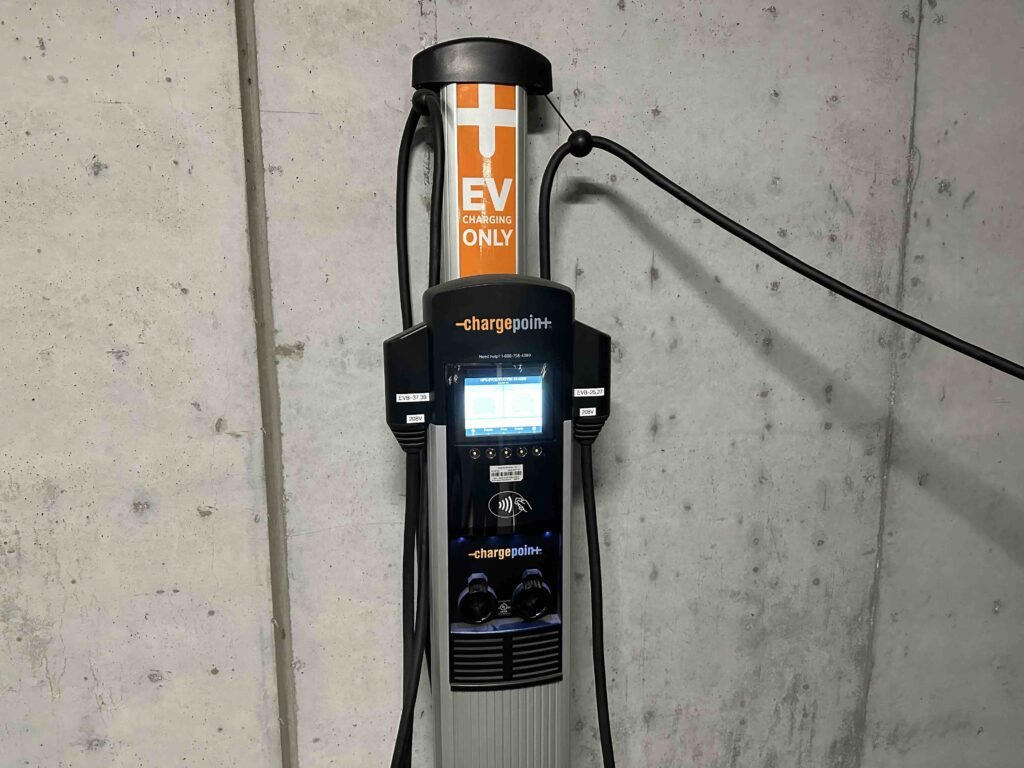
EVSE typically includes charging stations, connectors, cables, and associated hardware required to charge an EV’s battery. Notice how car charger is not included in this list. EVSE can vary in power levels, connection types, and features, providing flexibility for EV owners to charge their vehicles at home, work, or public locations. The image above shows an example of a ChargePoint EVSE commonly found in commercial settings.
Let me elaborate to provide more context.
EVSE Versus Charging Stations
The term EVSE is inclusive of the charging station, so there is no need to write EVSE charging station. It is also not actually a charger at all. The charger is inside the vehicle and is installed by the car manufacturer. This isn’t the only instance where we colloquially use the term “charger” to refer to something other than what actually charges your battery. Consider, for instance, the not-so-humble cell phone charger: a small device with a USB connection that we plug into our phones to restore their battery life. Everyone calls them phone chargers, but here’s the twist—they are not technically chargers either.
The device we commonly label as a charger is more accurately described as a power supply or a direct current (DC) power adapter. The true charger resides within your phone. The “charger” is a dedicated charging circuit that regulates the flow of electrical current from the external power source. The term “charger” is catchier and more memorable than “power supply” or “DC power adapter.” Consequently, it became the default term in everyday conversation, despite not perfectly encapsulating the device’s function. This same phenomenon applies to the EVSE, although in a slightly different form.
So, what exactly is an EVSE in relation to the phone example?
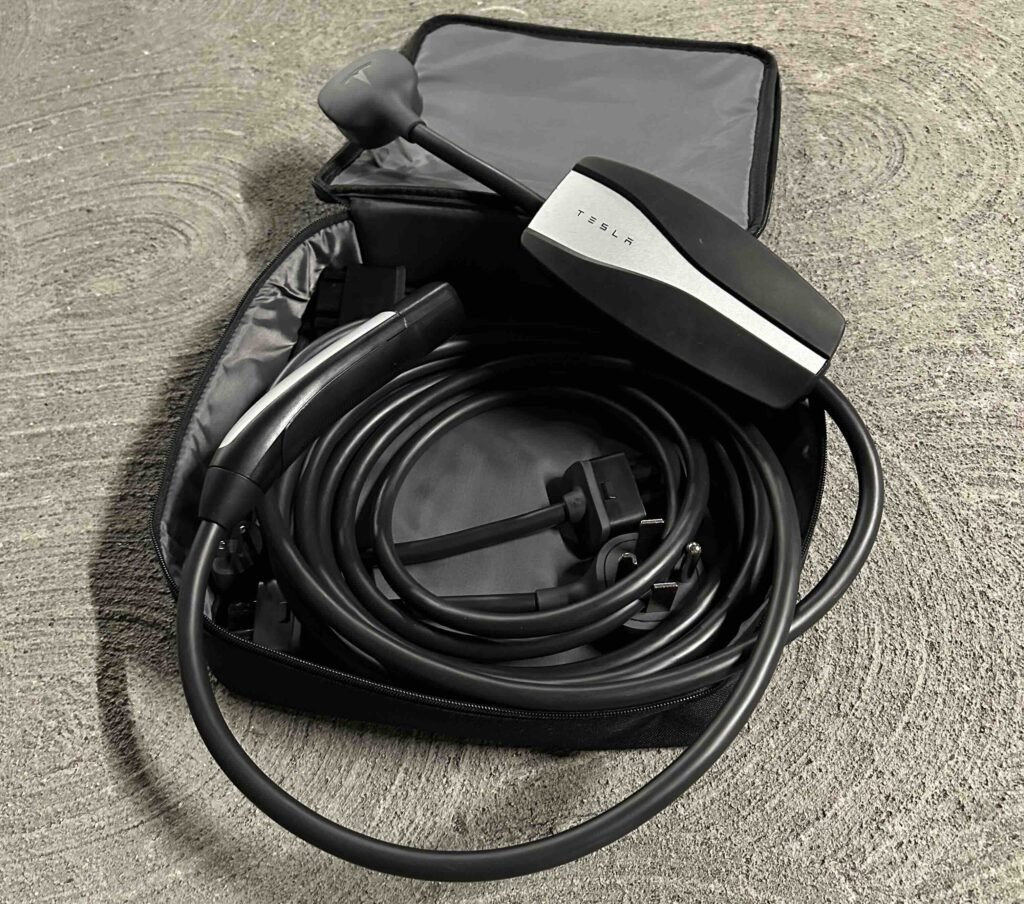
In the world of electric cars, EVSE plays a role comparable to if you used an extension cord to plug in your phone’s DC power adapter. Most of the time you just plug your phone’s DC power adapter directly in the wall. Electric cars are too big to pick up and attach to the wall; therefore, they need an extension cord element.
Envision EVSE as the connection between your home’s electricity and the charger within your EV. The extension cord (EVSE) brings the outlet to the car. It has some smarts In’mit, similar to GFCI outlets that are already common in US bathrooms and kitchens. The EVSE will check for cable shorts and amperage limitations but does not have the ability to charge a battery or convert the alternating current (AC) wall power to DC battery power.
Much like the scenario with phone chargers, where “charger” is colloquially used to denote the entire charging setup, the EVSE facilitates the flow of electrical energy to your car’s internal charging system, which in turn handles the charging process itself. The car will take this power, convert it to DC power at the necessary voltage, and send it to your battery. The EVSE will sit between your EV and your house wiring, waiting patiently for the car to use it as the bridge to supply it with electricity.
Fast Charging
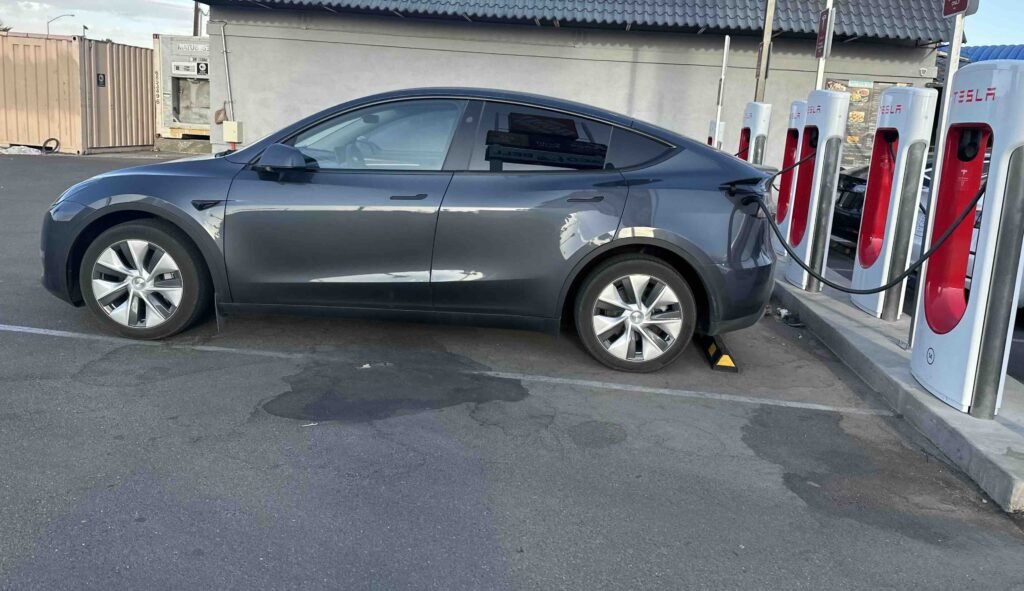
Unlike EVSE, public fast chargers (like the Tesla Superchargers shown above) are actually chargers. This means public fast chargers are more than just simple extension cords- they are both the extension cord and the DC power source. Public fast chargers provide the car the exact DC voltage the EV requests and links together chargers (sometimes the same model as the charger installed in the car) to provide as much power to the car as it can accept.
If you are looking for more information on fast charging, I will be posting another article soon to delve deeper into the topic. Stay tuned!
Frequently Asked Questions (FAQs)
1. What is the difference between EVSE and charging station?
These phrases are referring to the same thing as explained in the article body.
2. What does the EVSE stand for?
EVSE stands for electric vehicle supply equipment.
3. What are the three types of EV charging stations?
Level 1: 120V slow-speed AC charger. Comparable to a common US household outlet. Adds about 3-4 miles of charge per hour.
Level 2: 200-300V high-speed AC charging. Comparable to a clothes dryer US household outlet. Adds about 12-40 miles of charge per hour.
Level 3: >500V high-speed DC fast charging. This is a Tesla supercharger. Adds about 1000 miles of charge per hour.
4. What is the lifespan of EVSE?
EVSE technology is relatively new, so its lifespan is not yet definitive. It is estimated at around 10 years.
5. How do I charge my EV?
Not sure how to charge your new vehicle? Check out my article: Everything You Need To Charge Your Electric Car.
Conclusion – EVSE
In wrapping up, let’s take a moment to reflect on our journey through the world of EVSE charging stations. It’s been quite the ride, hasn’t it? We’ve peeled back the layers of terminology and technicalities to uncover the heart of what EVSE really means for electric cars.
While the term EVSE charging station is commonly used, its technical definition and significance are misunderstood. Despite colloquialisms leading to ambiguity, EVSE is the infrastructure facilitating the flow of electricity between EVs and a power source. Remember:
- The phase EVSE charging station is inaccurate when referring to EVSE.
- EVSE is inclusive of the charging station.
- EVSE is not the car charger, as that is already a component in EVs.
In an era where EVs are becoming increasingly prevalent, understanding EVSE is important. Throughout this exploration, I hope to have shed some light on the sometimes murky waters of EV infrastructure and have provided you with a clearer understanding of its importance in the grand scheme of sustainable transportation.
Now, the next question is: Is the EVSE becoming obsolete? Read my thoughts about it here.
Thinking About Getting a Tesla? 🚗⚡
If you’re considering buying a Tesla, you can get up to $2,500 off your purchase by using my referral link! It is highly recommended to purchase a Tesla through a referral link—it saves you money at no extra cost. 😊
Whether you’re a seasoned electric car enthusiast or just dipping your toes into the world of EVs, Imperfect Nostalgia is here to guide you every step of the way. As a Tesla owner and EV enthusiast myself, I spend a lot of time learning about the world of EVs and hope to continue to share my knowledge. Until next time, happy travels and keep on driving toward a greener future!
- Unless you pronounce it as EV-SEE! An acronym is when the abbreviation is said as a word, whereas an initialism is when the abbreviation is said as letters. An example of an acronym is NASA, whereas an example of an initialism is YMCA. ↩︎
Last Updated:
Disclaimer: This article is intended to be for informational purposes only and may contain affiliate links. Refer to the full disclaimer for more information.



